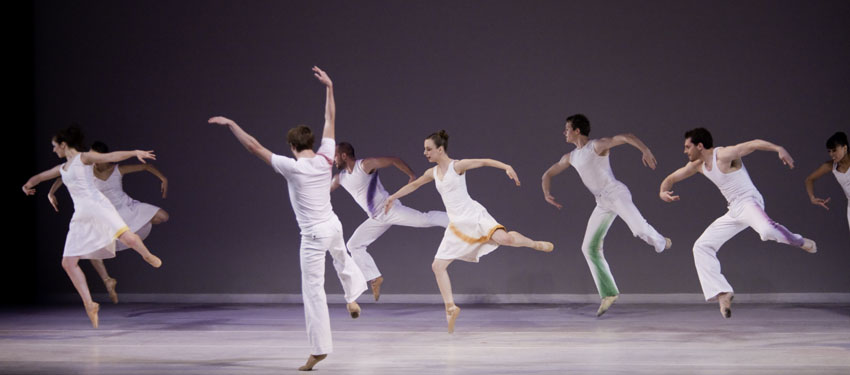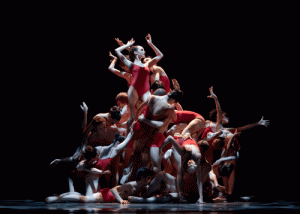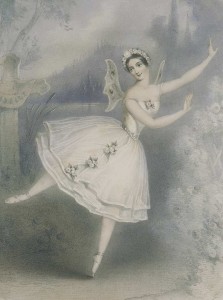
Friend of Art Scatter Martha Ullman West got back to Portland from a lengthy stretch in Kansas City, where she’s been researching a book on ballet legend Todd Bolender, just in time to take in one of the Rose City’s busiest dance weeks in quite a while. Here’s her report — and thanks, Martha, for Scattering!
**********************
Portland Dance Journal, Saturday Feb. 21 through Friday Feb. 27, 2009
I didn’t realize it until I sat down to to write this Scatter post, but what we had in Portland last week was fusion, fusion, fusion, and some con-fusion. It was not a week for purists, that’s for sure — from Oregon Ballet Theatre to the Trey McIntyre Project to Tuesday and Wednesday night’s performances at Reed College by Pappa Tarahumara, a Japanese company that performed what it claimed was a version of Chekhov’s Three Sisters, this one set in rural Japan in the 1960s.
Moreover, critic and historian Marcia Siegel was in town to give two lectures to Portland State University’s dance history students on fusion in ballet, and also to teach composition students in the same place. In addition, she showed two extraordinary films, Carolyn Brown’s Dune Dance and Merce Cunningham’s Biped. She also led a session with Reed students on how to write about dancing, based on the Pappa Tarahumara performance. And if you haven’t read Howling Near Heaven, her recent book on Twyla Tharp and her work, or The Shapes of Change, a book published in 1979 that is an indispensable part of my library, go and do so immediately.
Herewith a log of sorts:
********************
Saturday, 8 p.m.: I go to opening night of Oregon Ballet Theatre and the premiere of Christopher Stowell’s Rite of Spring. The program opened with Peter Martins’ Ash, with Yuka Iino and Chauncey Parsons in the principal roles and doing a sparkling job of dancing them. Bang off, the company showed how well-schooled it has become under Stowell’s leadership, how fast and how accurate in its technique: In Ash the dancers contributed artistry to what is basically an aerobic workout danced to an unstructured score.
 God knows Stravinsky’s 1912 Sacre du Printemps, played brilliantly here in its two-piano version by Carol Rich and Susan DeWitt Smith, is structured. Its lyrical beginning builds to a pounding crescendo in music that is still startling for its highly stylized brutality.
God knows Stravinsky’s 1912 Sacre du Printemps, played brilliantly here in its two-piano version by Carol Rich and Susan DeWitt Smith, is structured. Its lyrical beginning builds to a pounding crescendo in music that is still startling for its highly stylized brutality.
Seeking to do something new with Vaslav Nijinsky‘s anti-classical ballet about a primitive Russian fertility rite that calls for the sacrifice of a Chosen One (female, it’s almost needless to say), Stowell, assisted by Anne Mueller, has come up with an episodic narrative that is more about 21st century Americans and our seemingly endless search for community and catharsis than anything else. Or is it an episodic narrative? It’s definitely episodic, but the narrative may be up for grabs.
Michael Mazzola‘s movable-set-piece walls contribute to this effect, as do his lights. But on opening night, while I was impressed with the dancing and the production values, I was also more than a little mystified by Stowell’s intentions, and glad to know I’d have a chance to see it again.
Continue reading The week that was in dance: fusion and confusion →
 But no one seems quite as oddball, or as eerily sympathetic and nasty at the same time, as the Wilis, those sad young spectres of girls who were jilted by their lovers before their wedding day and now spend their nights madly dancing young men to death before fading off into the sunrise.
But no one seems quite as oddball, or as eerily sympathetic and nasty at the same time, as the Wilis, those sad young spectres of girls who were jilted by their lovers before their wedding day and now spend their nights madly dancing young men to death before fading off into the sunrise.
 God knows Stravinsky’s 1912 Sacre du Printemps, played brilliantly here in its two-piano version by Carol Rich and Susan DeWitt Smith, is structured. Its lyrical beginning builds to a pounding crescendo in music that is still startling for its highly stylized brutality.
God knows Stravinsky’s 1912 Sacre du Printemps, played brilliantly here in its two-piano version by Carol Rich and Susan DeWitt Smith, is structured. Its lyrical beginning builds to a pounding crescendo in music that is still startling for its highly stylized brutality.